UAE construction strives to decarbonise
29 June 2023
There are several reasons for the UAE construction sector to decarbonise. The most compelling stand in stark contrast to each other. On one hand, the industry is a significant contributor to the national economy. On the other, it is one of the biggest contributors to global greenhouse gas (GHG) emissions.
This discrepancy makes it inevitable that the industry will have to adopt more sustainable practices.
“Can UAE construction truly achieve decarbonisation? Yes, in the long term,” says Craig Thackray, vice president – environment MEA at US-based consultancy Aecom.
“Today, it is more a matter of when this would be realistically achievable.”
A report by the Arab Monetary Fund in 2022 highlights that the construction sector contributed almost $39bn to the UAE’s GDP in 2021, accounting for 9 per cent of the nation’s $402.9bn GDP that year.
The sector is also linked to every other major sector in the UAE: it is the starting point for industries through the construction of physical environments and supporting infrastructure.
In the UAE, construction is synonymous with innovation and growth, enabling world-class projects such as the Burj Khalifa, Palm Jumeirah, Louvre Abu Dhabi and Dubai Metro.
As the country’s real estate sector enjoys demand growth, its construction players reap the benefits. Recent months have seen project announcements including Al-Habtoor Group’s estimated AED9.5bn ($2.6bn) residential developments, the AED1.2bn Upper House project by Dubai Multi Commodities Centre in partnership with Ellington Properties and the $5.4bn mixed-use Dubai South project announced by Azizi Developments. All of these represent major opportunities for contractors and their suppliers.
Environmental impact
Against all its positive contributions, however, weighs the construction industry’s negative impact on the environment.
The built environment is responsible for almost 40 per cent of global carbon emissions annually. This includes both operational carbon, which is emitted during daily use, and embodied carbon from the building materials themselves.
The World Bank estimates that about 70 per cent of global GHG emissions come from infrastructure construction and operations such as power plants, buildings and transport.
A report from the Global Alliance for Buildings & Construction during the 27th UN Climate Change conference (Cop 27) in 2022 highlights that, despite increasing investment in boosting energy efficiency and lowering energy intensity, the building and construction sector’s energy consumption and carbon dioxide (CO2) emissions have rebounded since the Covid-19 pandemic.
With rising real estate demand there comes increasing pressure from sustainability-focused investors. Property consultancy JLL notes that 63 per cent of leading real estate investors strongly agree that “green strategies can drive higher occupancy, higher rents, higher tenant retention and overall higher value”. This means that investors are actively seeking more sustainable ventures.
In a bid to stay ahead of the curve, over the past decade the UAE has introduced regulations and standards to incentivise sustainable development. These include Dubai’s green building rating system (Al-Sa’fat) and the Dubai building code, which integrates some sustainability principles; Abu Dhabi’s Pearl rating system (Estidama); and Ras al-Khaimah’s green building regulations (Barjeel) and green public procurement guidelines. More are expected to follow.
“Sustainability is on the strategic agenda in the UAE construction sector,” says Tamara Bajic, associate director – strategy and advisory at engineering consultancy AESG.
“Driven by operational expenditure reduction and green financing schemes, and supported by the UAE’s Net-Zero by 2050 pathway, a growing number of businesses are demonstrating their commitment to decarbonisation.”
Bajic says that developers are driving decarbonisation by investing in low-carbon construction materials and building envelopes; designing for solar energy utilisation; thinking upfront about operational emissions; and planning energy-efficient mechanical, electrical and plumbing systems.
Challenges arise during the implementation process, however, as well as in aligning project requirements with a contractor or supplier’s “decarbonisation maturity”, says Bajic.
At present, in the UAE market there is a lack of visibility into the sustainability processes of suppliers, and limited availability of low-carbon materials and technological solutions. “In most cases, developers cannot directly control emissions from construction activities as they are dependent on outsourced construction contractors,” adds Bajic.
Procurement teams can play a role in spotting the data blind spots and building sustainable procurement systems. “This will be key to influencing the contractors’ business models to take into account product life cycle emissions and activities performed on the construction site, and to implementing carbon-reduction initiatives,” she says.
However, reluctance remains when it comes to overhauling entrenched industry practices, notes Aecom’s Thackray.
“Change within the construction industry is a challenge as the magnitude required is significant and the proposed implementation time is limited,” he says.
Financial barriers also limit the implementation of decarbonisation measures, but this is slowly changing in light of recent commitments made by financial institutions and large clients in the UAE. First Abu Dhabi Bank has committed to lending, investing, and facilitating $75bn in sustainable finance by 2030, while Abu Dhabi Commercial Bank plans to provide AED35bn in green finance by 2030. Meanwhile, Abu Dhabi National Oil Company (Adnoc) is supporting decarbonisation by allocating $15bn for projects focused on clean power, carbon capture and storage and energy efficiency.
“Carbon-reduction initiatives are not necessarily costly if we are looking at the long-term goals,” says Bajic. “In most cases, the carbon reductions have a highly positive impact on the operational expenses, and offer fast returns.”
Working together
As changes are introduced in the industry, and the shift towards the use of sustainable building materials and cleaner fuels picks up pace, it is important to take into account the current footprint of new and existing developments, says Bajic.
“Clients and consultants can then identify initiatives that support decarbonisation and prioritise them by conducting a cost/benefit analysis to understand what is achievable within the company’s absorption capacity.
“This needs to be followed up with clear minimum sustainability requirements for new projects, as well as with incentives to support the scale-up of new technologies and access to renewable energy infrastructure.”
Thackray says that governments and clients can facilitate change through incentivisation schemes to provide tangible benefits to contractors.
“There needs to be a combination of incentives – this includes financiers and organisations establishing contract provisions to drive sustainable practices,” he says.
“Government regulation would be the most effective incentive, however, as failure to comply would have significant consequences. Legislative requirements can thus drive meaningful change to meet sustainability targets.”
Ultimately, the construction industry must take a whole life cycle approach to its projects, from design and procurement through to construction, operations and end-of-life.
“The opportunities lie in the multi-level approach and collaboration for decarbonisation,” says Bajic.
“Once the decarbonisation initiatives are drafted across the value-chain, the involved players must identify areas of collaboration and co-create the delivery of sustainable projects together with designers, architects, suppliers, contractors, and also governments and financial institutions.”
Exclusive from Meed
-
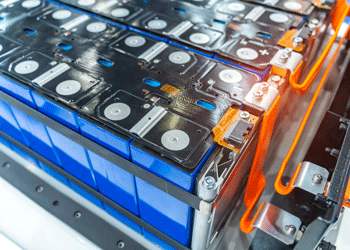 Batteries shape the region’s energy future
Batteries shape the region’s energy future18 December 2025
-
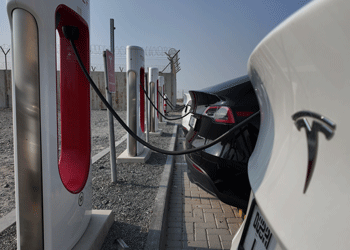 Middle East drives electric vehicle revolution
Middle East drives electric vehicle revolution18 December 2025
-
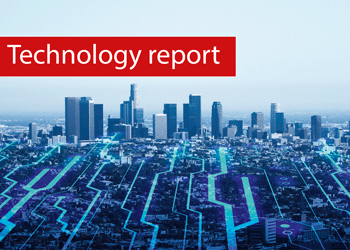 Key technology themes poised to shape 2026
Key technology themes poised to shape 202618 December 2025
-
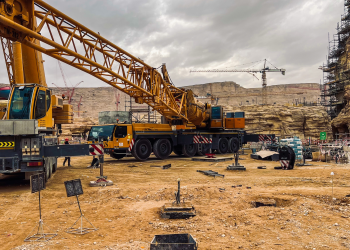 Qiddiya tenders Janadriyah cultural district hotels
Qiddiya tenders Janadriyah cultural district hotels18 December 2025
-
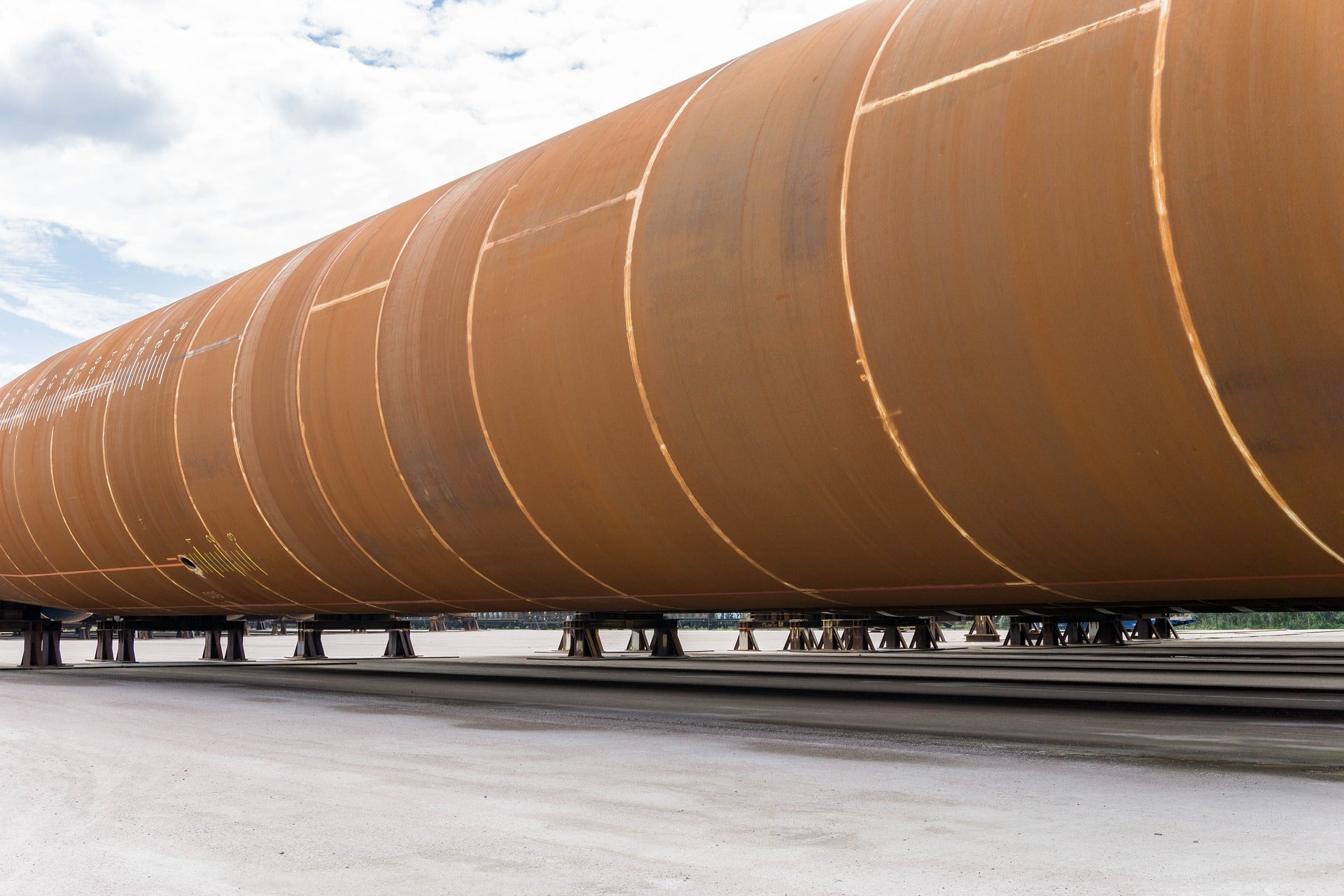 Iraq-Turkiye pipeline exporting around 212,000 b/d of oil
Iraq-Turkiye pipeline exporting around 212,000 b/d of oil18 December 2025
All of this is only 1% of what MEED.com has to offer
Subscribe now and unlock all the 153,671 articles on MEED.com
- All the latest news, data, and market intelligence across MENA at your fingerprints
- First-hand updates and inside information on projects, clients and competitors that matter to you
- 20 years' archive of information, data, and news for you to access at your convenience
- Strategize to succeed and minimise risks with timely analysis of current and future market trends

Related Articles
-
 Batteries shape the region’s energy future
Batteries shape the region’s energy future18 December 2025

This package also includes:
> TECH THEMES: Key technology themes poised to shape 2026
> EVs: Middle East drives electric vehicle revolution
Batteries, having progressed from enabling consumer electronics to powering the first wave of electric vehicles (EVs), are now poised to become one of the world’s most significant industrial and geopolitical forces in the next decade, says GlobalData’s Strategic Intelligence platform.
According to a recently published report, this progress is due to stored energy’s accelerating and expanding role in mitigating climate change.
For the Middle East, a region defined by its energy leadership and major economic diversification strategies, the battery revolution presents not just a commercial opportunity, but a strategic imperative focused on securing key components of the new global supply chain. The region’s success in the coming years will be judged by its ability to navigate the raw material shortages, geopolitical rivalries and technological shifts that define the market.
The cornerstone of this theme is the soaring demand for cheap, safe and high-performance batteries, driven predominantly by the automotive sector, which is forecast to account for over 80% of aggregate battery demand between now and 2035.
Industry growth
Global lithium-ion battery industry revenues are forecast to surge to over $408bn by 2035, up from $88.6bn in 2022.
This growth is spurring industrial expansion, with the global transition to EVs requiring an accompanying build-out of battery gigafactories. While China currently dominates this landscape, accounting for 77% of EV gigafactories in 2022, Europe and North America are taking steps to reduce their dependence on Chinese supply chains by 2030, driven by the US Inflation Reduction Act and European ambition.
This geopolitical tension directly impacts the Middle East’s emerging industrial strategy. The need for regionalised supply chains is critical, and North Africa has already taken a step towards this with Chinese investment establishing a battery gigafactory in Morocco, aimed at supplying the European market.
Furthermore, Gulf nations are exploring direct investment in manufacturing capability, demonstrated by the Statevolt plan to build a $3.2bn gigafactory in the UAE’s northern emirate of Ras Al-Khaimah, specialising in advanced battery cells.
These efforts are essential to integrating the Middle East into the global manufacturing network, leveraging its geographical position between the major consuming markets of Europe and Asia.
Beyond manufacturing, the most significant threat to the industry is the impending shortage of low-cost, easy-to-purify raw materials like lithium, cobalt and nickel, which is largely due to a lack of investment in new mines over the past five years.
Lithium extraction, in particular, requires significant investment to meet the growing demand. This crunch has been exacerbated by China’s control over the entire supply chain, from the mines to the refining of critical battery metals.
This situation is as much an environmental and geopolitical concern as it is an economic one, necessitating a shift towards a circular battery economy. The region, therefore, has an immediate need to invest in recycling facilities to offset near-term supply shortages, securing local access to processed materials for its emerging domestic battery production capabilities.
Green hydrogen capacity in the region is projected to grow at a compound annual growth rate of nearly 150% in 2025-30
Clean energy edge
The Middle East’s position as a source of clean energy and a major energy exporter makes the deployment of hydrogen fuel cells a crucial complementary theme. Hydrogen has been championed for decades as a clean fuel, and a UN-sponsored Green Hydrogen Catapult Initiative, involving Saudi and European founding partners, aims to scale up green energy production.
The Middle East is pursuing this with projects like Dubai’s Green Hydrogen project, which uses solar power to produce hydrogen, signalling the region’s intention to be a major player in clean fuel production.
Though hydrogen is unlikely to power small vehicles like cars, its future dominance is expected in heavy industrial processes and heavy transport, such as lorries, trains, ships and planes, making it highly relevant to the Gulf’s core logistics and industrial sectors.
Green hydrogen capacity in the region is projected to grow at a compound annual growth rate of nearly 150% in 2025-30, although this starts from a low base.
Finally, the shift towards battery-powered EVs appears to be gaining regional momentum. Although EV adoption in the Middle East is still in its early stages – with the UAE leading with just a 3% penetration of new car sales – projections show EVs could account for as much as 64% of the new car market by 2035. The transition is supported by major investment in charging infrastructure and a market poised to be worth tens of billions of dollars.
Impending consumer demand will be a primary driver for the strategic battery manufacturing and hydrogen production investments now being made by policymakers and industrial leaders in the GCC. The confluence of these factors – securing the raw materials, establishing domestic manufacturing and deploying complementary clean fuels like hydrogen – will be central to the Middle East’s role in the global energy transition over the next decade.
https://image.digitalinsightresearch.in/uploads/NewsArticle/15278484/main.gif -
 Middle East drives electric vehicle revolution
Middle East drives electric vehicle revolution18 December 2025

This package also includes:
> TECH THEMES: Key technology themes poised to shape 2026
> BATTERIES: Batteries shape the region's energy future
The global automotive landscape is undergoing a seismic shift as electric vehicles (EVs) become increasingly central to the industry’s future, according to GlobalData’s Strategic Intelligence platform.
This is not just a technological evolution but a geopolitical one, with the Middle East poised to play a pivotal role. The region, traditionally known for its oil reserves, is now at the forefront of the EV revolution, driven by strategic investments, policy shifts and a commitment to sustainability.
In recent years, the Middle East has witnessed a surge in initiatives aimed at fostering the growth of EVs. Governments across the region are implementing policies to encourage EV adoption, recognising the dual benefits of reducing carbon emissions and diversifying their economies away from oil dependency.
The UAE, for example, has set ambitious targets to increase the number of EVs on its roads, supported by substantial investments in charging infrastructure and incentives for EV buyers.
The strategic location of the Middle East, bridging Europe, Asia and Africa, provides a unique advantage in the global EV supply chain. This geographical positioning allows the region to serve as a critical hub for the distribution and manufacturing of EVs and their components. Countries like Saudi Arabia are capitalising on this by investing in local manufacturing capabilities, aiming to become leaders in the production of EVs and related technologies.
The Middle East’s abundant natural resources, particularly in minerals essential for battery production, position it as a key player in the EV market. The region’s focus on developing a sustainable supply chain for these materials is crucial, as the global demand for batteries continues to rise. This strategic move not only supports the local economy but also strengthens the region’s influence in the global automotive industry.
The shift towards EVs in the Middle East is also driven by a broader commitment to sustainability and climate goals. The region’s governments are increasingly aligning their policies with international environmental standards, recognising the
importance of transitioning to cleaner energy sources. This alignment is reflected in the growing number of partnerships between Middle Eastern countries and leading global automotive companies, aimed at accelerating the development and deployment of EV technologies.Despite the challenges, momentum towards EVs in the Middle East remains positive
Tackling challenges
The transition is not without its challenges. The Middle East faces significant hurdles in terms of infrastructure development and consumer acceptance.
The establishment of a comprehensive charging network is critical to support the widespread adoption of EVs. Additionally, changing consumer perceptions and encouraging the shift from traditional combustion engines to EVs requires concerted efforts on the part of both the public and the private sector.
Despite the challenges, the momentum towards EVs in the Middle East remains positive. The region-wide commitment to innovation and sustainability is evident in the proactive approach to addressing these issues. By investing in research and development, fostering international collaborations and implementing forward-thinking policies, the Middle East is positioning
itself as a leader in the global transition to EVs.As the world moves towards a more sustainable future, the region’s efforts to embrace EVs will not only transform its own transportation landscape, but also contribute significantly to global environmental goals.
The Middle East’s journey towards becoming a central player in the EV market is a compelling narrative of change, resilience and forward-thinking leadership.
https://image.digitalinsightresearch.in/uploads/NewsArticle/15277963/main.gif -
 Key technology themes poised to shape 2026
Key technology themes poised to shape 202618 December 2025

This package also includes:
> EVs: Middle East drives electric vehicle revolution
> BATTERIES: Batteries shape the region's energy future
The technological landscape in 2026 is poised for transformative shifts that promise to redefine industries and reshape societal norms.
The predictions for the coming year, as outlined in the Tech Predictions 2026 report published by UK analytics firm GlobalData’s Strategic Intelligence unit, highlight several areas where technology will make significant strides, from the Internet of Things (IoT) to artificial intelligence (AI), and from robotics to the future of mobility.
These advancements are not just incremental; they represent a paradigm shift in how technology integrates with and enhances human life.
Anticipated advances
The IoT is set to become an even more integral part of our daily lives, with the market expected to surpass $1.4tn by 2026. This growth is driven by advancements in wireless technologies, such as 5G and satellite networks, which will enhance connectivity and enable IoT devices to operate in remote locations.
The integration of AI into IoT, known as AIoT, will further revolutionise the field by enabling automated operations and predictive maintenance.
Security concerns remain a significant hurdle, as the fragmented security standards landscape poses risks to IoT deployments. The challenge lies in creating robust security frameworks that can protect vast networks of interconnected devices from cyber threats, ensuring that the benefits of IoT are not overshadowed by vulnerabilities.
In the realm of AI, 2026 will witness the expansion of the agentic AI ecosystem. This new phase of AI development involves AI agents capable of autonomous decision-making, which will be utilised across various sectors.
Despite the potential of these technologies, the adoption of AI tools in enterprises will be tempered by uncertainties regarding their business value. Nonetheless, AI’s influence is undeniable, with its applications ranging from enhancing workplace productivity to transforming the gaming industry.
The ethical implications of AI, particularly in terms of decision-making and data privacy, will continue to be a topic of debate. As AI systems become more autonomous, the need for transparent algorithms and accountability mechanisms becomes increasingly critical.
Robotics, too, is on the brink of a new era, fuelled by advancements in AI and cloud computing. These technologies will unlock new use cases for robots, particularly in service settings where they can assist humans in non-industrial environments.
The interest in humanoid robots is also expected to grow, driven by their potential to address labour shortages and perform tasks in hazardous environments. As major tech companies seek to expand their stake in the robotics industry, we can anticipate a wave of acquisitions and mergers.
The integration of robots into everyday life will raise questions about the future of work and the role of humans in an increasingly automated world. While robots can enhance efficiency and safety, there is a need to address the socioeconomic impacts of automation, particularly in terms of employment and skill development.
The adoption of AI tools in enterprises will be tempered by uncertainties regarding their business value
Driving change
The future of mobility is another area where significant changes are anticipated. Expected to be a pivotal year for the adoption of robotaxis, in 2026 pilot projects will transition to commercial rollouts. This shift is facilitated by the collaboration between technology developers, ride-hailing platforms and regulators, which lowers the barriers to entry.
The electric vehicle market in North America is predicted to plateau, hindered by policy uncertainties and the expiration of key federal tax credits.
The development of autonomous vehicles will also necessitate advancements in infrastructure, such as smart roads and traffic management systems, to ensure safety and efficiency. Moreover, the environmental impact of increased vehicle automation and electrification will be a critical consideration, as the world grapples with the challenges of climate change.
In the space economy, the market is projected to reach $453.9bn in 2026, driven by advances in communications and navigation technologies. The deployment of low Earth orbit satellite constellations will continue to enhance global connectivity, providing significant downstream capacity.
The convergence of space and quantum technologies is also on the horizon, with quantum sensing and cryptography being integrated into space-borne systems. This integration will open new frontiers in space exploration and security, offering unprecedented opportunities for scientific discovery and commercial ventures.
The militarisation of space and the potential for conflicts over space resources will require careful international cooperation and regulation.
Streaming platforms, meanwhile, will face a profitability crunch as the market becomes increasingly saturated. To survive, platforms will need to consolidate and focus on dual content strategies that cater to both global and local audiences.
AI will play a crucial role in this transformation, enabling platforms to personalise content and streamline production processes. The competition for viewer attention will drive innovation in content delivery and user engagement, with immersive technologies such as virtual reality and augmented reality offering new ways to experience media.
The ethical implications of AI-driven content curation, particularly in terms of bias and misinformation, will need to be addressed to maintain trust and integrity in digital media.
Positive outlook
As we look to 2026, it is clear that technology will continue to be a driving force in shaping the future. Advancements in IoT, AI, robotics and mobility, among others, will not only transform industries but also redefine how we interact with the world around us.
However, these developments also bring challenges, particularly in terms of security, regulation and ethical considerations. As such, it is imperative for stakeholders to navigate these changes with a balanced and considered approach, realising the benefits while mitigating potential risks.
The journey in 2026 is not just about technological innovation; it is about harnessing these advancements to create a more connected, efficient and sustainable world. As we embrace the possibilities of the future, we must also remain vigilant about the challenges that lie ahead, ensuring that technology serves humanity and not the other way around. The path forward will require collaboration, foresight and a commitment to ethical principles, as we strive to build a future that is inclusive, equitable and resilient.
https://image.digitalinsightresearch.in/uploads/NewsArticle/15277938/main.gif -
 Qiddiya tenders Janadriyah cultural district hotels
Qiddiya tenders Janadriyah cultural district hotels18 December 2025
Saudi gigaproject developer Qiddiya Investment Company (QIC) has issued a tender inviting firms to bid for a contract to build two hotels at the Janadriyah cultural district.
The tender was issued on 11 December. Technical bids are due on 29 January, and the commercial bid submission deadline is 19 February.
The package comprises the construction of the Wadi Hotel and the Gateway Hotel.
Firms are also bidding for the Janadriyah cultural district main works. The tender for this package was issued in November.
QIC is expected to receive bids for this package by 30 December.
QIC is accelerating plans to develop additional assets at Qiddiya City.
In December, MEED exclusively reported that QIC is expected to float a tender soon for the construction of the estimated SR7bn ($1.8bn) National Athletics Stadium at its Qiddiya entertainment city development.
MEED understands that the prequalification process has reached an advanced stage and the tender for the main contract is likely to be issued within a few weeks.
The multipurpose stadium will cover an area of approximately 182,000 square metres and its design is inspired by the London Olympic Stadium.
Firms are bidding for a SR980m ($261m) contract covering the construction of staff accommodation. Earlier in December, MEED exclusively reported that QIC has allowed firms until 8 January to submit their bids.
The tendering follows QIC’s October announcement that it had awarded a SR5.2bn ($1.4bn) construction contract to build the performing arts centre at Qiddiya Entertainment City.
The centre will have over 3,000 seats across three theatres. It will also include a cantilevered amphitheatre overlooking Qiddiya City’s lower plateau, with a 500-seat centre suspended from above.
The Qiddiya City performing arts centre is one of several major projects within the greater Qiddiya development. Other projects include an e-games arena, the Prince Mohammed Bin Salman Stadium, a motorsports track, the Dragon Ball and Six Flags theme parks, and Aquarabia.
The project is a key part of Riyadh’s strategy to boost leisure tourism in the kingdom. According to GlobalData, leisure tourism in Saudi Arabia has experienced significant growth in recent years.
https://image.digitalinsightresearch.in/uploads/NewsArticle/15277573/main.jpg -
 Iraq-Turkiye pipeline exporting around 212,000 b/d of oil
Iraq-Turkiye pipeline exporting around 212,000 b/d of oil18 December 2025

The Iraq-Turkiye Pipeline (ITP) is currently exporting around 212,000 barrels of oil a day (b/d), according to industry sources.
Before the 2023 shutdown, the pipeline was transporting about 450,000-500,000 b/d of crude.
One source said: “Some thought that by now the export flows through the pipeline would be higher, but a lack of drilling at oil fields in Iraqi Kurdistan during the shutdown has led to a decline in pumping capacity.”
On 27 September, oil flows restarted from Iraqi Kurdistan to the Turkish port of Ceyhan via the ITP.
The restart followed an agreement between oil companies operating in Iraqi Kurdistan, the Iraqi federal government in Baghdad and the Kurdistan Regional Government (KRG).
Under the terms of the deal, the KRG is delivering the crude to Iraq’s state-owned oil marketing company, Somo, and an independent trader is handling sales from the Turkish port of Ceyhan using Somo’s official prices.
Research and consultancy firm Wood Mackenzie is preparing a report that will help determine the prices oil-producing companies receive.
Eight oil producers have agreed to accept a temporary price of $16 a barrel until the Wood Mackenzie review is completed.
The final review is expected to lead to a retroactive adjustment of payments.
The initial shutdown of the ITP started in March 2023, when the International Chamber of Commerce ordered Turkiye to pay Iraq $1.5bn in damages for what it decided were unauthorised exports by the Kurdish regional authorities.
Turkiye has stated that it plans to continue its appeal against this compensation order.
https://image.digitalinsightresearch.in/uploads/NewsArticle/15274411/main.jpg


